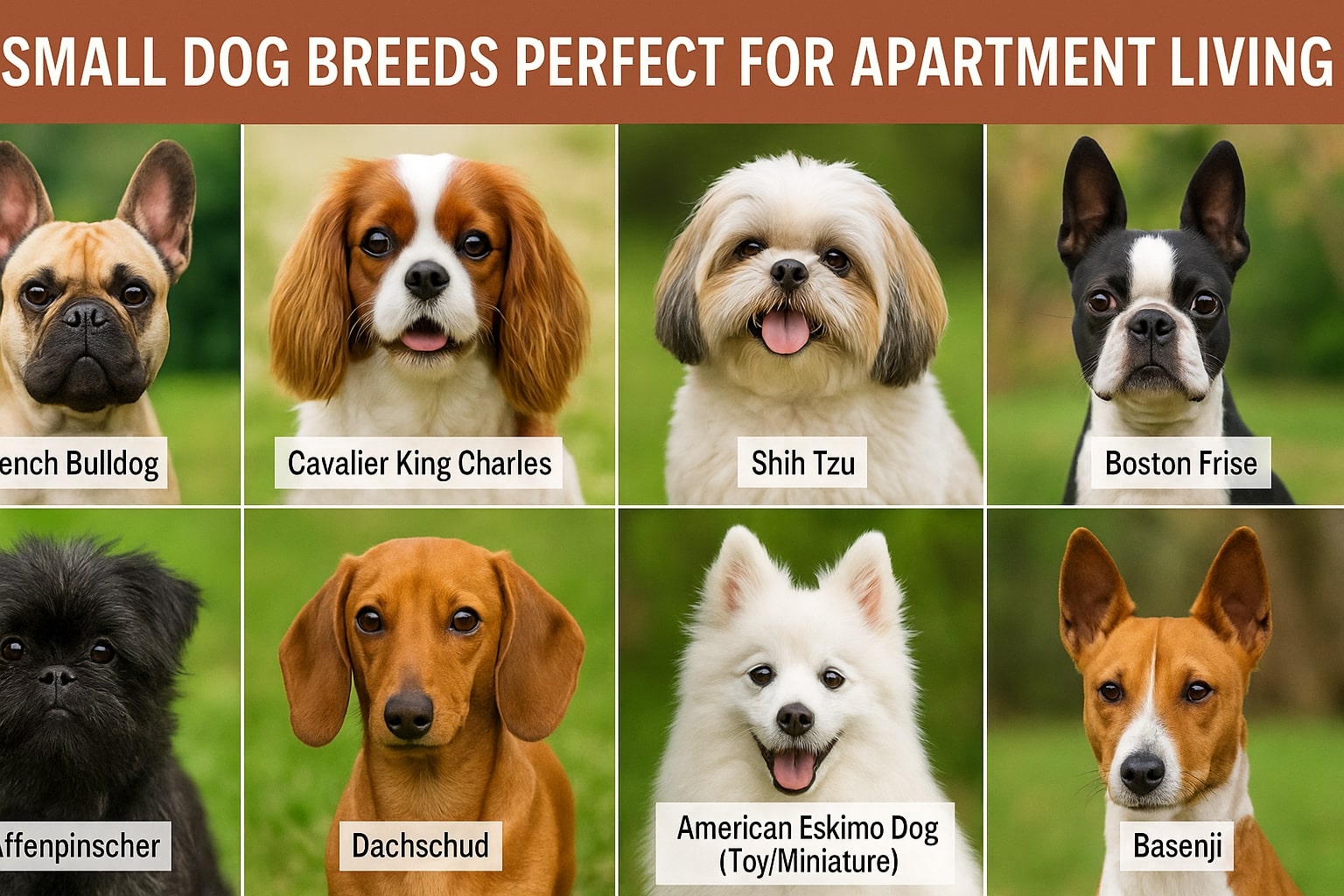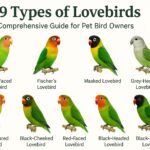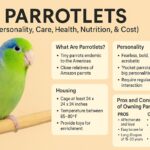Living in an apartment doesn’t mean you have to give up your dreams of having a canine companion. Many dog breeds adapt wonderfully to smaller living spaces, providing all the joy and companionship of pet ownership without needing a sprawling backyard. The key is finding breeds that match your lifestyle and space constraints.
Small dogs often make ideal apartment companions due to their size, but other factors like energy levels, barking tendencies, and temperament are equally important considerations. This comprehensive guide explores ten small dog breeds that consistently rank as excellent apartment companions, helping you find the perfect furry roommate for your urban dwelling.
Understanding What Makes a Good Apartment Dog
Before diving into specific breeds, it’s worth understanding what qualities make certain dogs better suited for apartment living. The perfect apartment dog isn’t just small; several important characteristics contribute to a successful apartment living situation.
Size matters in apartment living, but it’s not the only consideration. Some larger breeds with calm temperaments can actually be better apartment companions than high-energy small dogs. However, smaller dogs generally require less space to move around comfortably and are easier to manage in confined areas.
Energy level is perhaps more important than size. Dogs with moderate to low energy levels tend to adapt better to apartment living since they don’t need extensive room to run. They’re content with regular walks and indoor play sessions rather than requiring large open spaces to burn off energy.
Barking tendencies should be a major consideration. Excessive barking can quickly lead to neighbor complaints and stress for everyone involved. Some breeds are naturally quieter or can be trained to bark less, making them better neighbors in close quarters.
Sociability plays a crucial role too. Apartment dogs will likely encounter many people and possibly other pets in common areas like elevators, hallways, and lobbies. Dogs that are friendly or at least tolerant of strangers tend to make better apartment residents.
10 Best Small Dog Breeds for Apartments
1. French Bulldog
French Bulldogs have skyrocketed in popularity among apartment dwellers in recent years, and for good reason. These compact, sturdy dogs typically weigh between 16-28 pounds, making them substantial enough to be sturdy companions without taking up too much space.
Frenchies are known for their affectionate nature and strong bonds with their owners. They thrive on human companionship and are perfectly happy to lounge on the couch for hours. Their laid-back attitude makes them ideal for smaller living spaces where high-energy dogs might feel confined.
One of the biggest advantages French Bulldogs offer apartment residents is their relatively quiet nature. Unlike many small breeds, they aren’t known for excessive barking, which keeps both you and your neighbors happy. They might alert you to visitors, but they don’t typically bark at every passing noise.
Exercise needs for French Bulldogs are minimal compared to many other breeds. A couple of short walks daily and some indoor playtime is usually sufficient to keep them healthy and content. This makes them perfect for busy apartment dwellers who might not have easy access to outdoor spaces.
However, potential Frenchie owners should be aware of their sensitivity to heat due to their short snouts. Air conditioning is practically a necessity for these dogs during summer months, which is usually not an issue in most apartments. Their short coat requires minimal grooming, adding to their appeal for apartment living.
2. Cavalier King Charles Spaniel
The Cavalier King Charles Spaniel combines the best qualities of a toy breed with the gentle demeanor of a sporting spaniel. Weighing between 13-18 pounds, these dogs strike an ideal balance – small enough for apartment living but sturdy enough to handle some play.
Cavaliers are renowned for their sweet, gentle temperament and adaptability. They form strong bonds with their owners and are content to match your energy level – whether that means cuddling on the couch or joining you for a moderate walk.
These spaniels have moderate exercise needs that fit well with apartment living. A few short walks daily and some indoor playtime will keep them happy and healthy. Their exercise requirements are easily met even without a yard, making them perfect for urban environments.
One of their most apartment-friendly characteristics is their quiet nature. Cavaliers aren’t known for excessive barking, which is a huge advantage in close-quarters living situations. They may alert you to visitors but typically don’t bark at every sound in the hallway.
Their beautiful, silky coat does require regular brushing to prevent mats and tangles, but this grooming time can be a bonding experience rather than a chore. Many Cavalier owners report that these dogs are exceptionally good with children, other pets, and strangers, making them excellent companions for social apartment dwellers.
3. Shih Tzu
The Shih Tzu was literally bred to be a companion dog, with centuries of history as palace pets in China. This heritage makes them naturally suited to indoor living and close quarters.
Typically weighing between 9-16 pounds, Shih Tzus are small enough to comfortably navigate apartment living. Their size makes them easy to transport and manage in smaller spaces, which is perfect for apartment dwellers.
The Shih Tzu’s personality is characterized by an affectionate, outgoing nature that makes them excellent companions. They’re known for forming strong bonds with their owners and typically get along well with strangers, children, and other pets, making them ideal for apartment buildings where social interactions are frequent.
Exercise requirements for Shih Tzus are modest. Short daily walks and some indoor play sessions are usually sufficient to keep them healthy and happy. This minimal exercise need is perfect for busy apartment dwellers or those without easy access to outdoor spaces.
The most high-maintenance aspect of Shih Tzus is their beautiful, flowing coat, which requires regular grooming to keep it clean and mat-free. Many apartment owners opt for a shorter “puppy cut” that reduces grooming time while maintaining the breed’s adorable appearance. Despite the grooming requirements, their low-shedding coat makes them a good option for keeping apartments cleaner.
4. Affenpinscher
The Affenpinscher might not be as well-known as some other apartment-friendly breeds, but these small dogs have big personalities that make them fantastic apartment companions. Weighing in at just 7-10 pounds and standing less than 12 inches tall at the shoulder, these tiny dogs take up minimal space in your apartment1.
Often described as “monkey-like” (their name actually means “monkey terrier” in German), Affenpinschers are known for their amusing antics and expressive faces. Their intelligence and adaptability make them quick learners who adjust well to apartment routines and rules1.
These little dogs are quite smart and pick up on training relatively quickly, though they do have an independent streak that can sometimes make them a bit stubborn. Consistent, positive training methods work best with this bright breed.
While Affenpinschers are alert and may bark to announce visitors or unusual noises, they can be trained to moderate their vocal tendencies. This is an important consideration for apartment living where noise complaints can become an issue.
Their wiry coat requires regular brushing but doesn’t shed excessively, which is another plus for keeping your apartment clean. Though small, Affenpinschers have a sturdy build and confident demeanor that makes them seem larger than they actually are – perfect for those who want a tiny dog with a big personality.
5. Bichon Frise
The Bichon Frise is practically tailor-made for apartment living, with a cheerful disposition and compact size that fits perfectly into smaller spaces. Weighing between 7-12 pounds, these fluffy white dogs don’t require much space to be happy.
One of the Bichon’s greatest apartment-friendly qualities is their relatively quiet nature. Unlike many small breeds, they aren’t typically yappy and show restraint when it comes to barking. This consideration for noise levels makes them excellent neighbors in close-quarter living situations.
Bichons are playful and energetic but don’t require extensive exercise. Their energy comes in bursts, and they’re happy with moderate daily walks and some indoor play sessions. This makes them ideal for apartment dwellers who don’t have immediate access to large outdoor spaces.
Their hypoallergenic coat is another advantage for apartment living, as it minimizes dander and shedding throughout your space. However, this curly white coat does require regular grooming to prevent matting and maintain its fluffy appearance. Many apartment dwellers find the trade-off worthwhile for a cleaner living space.
The Bichon’s friendly, sociable nature makes them excellent companions who adapt well to meeting new people in apartment buildings and being around various neighbors. They typically get along well with other pets and children, making them versatile additions to many types of households.
6. Boston Terrier
Boston Terriers, affectionately known as “American Gentlemen” due to their tuxedo-like markings, make excellent apartment companions. Weighing between 12-25 pounds, they’re small enough for apartment living while still having a sturdy, athletic build.
These dogs require only moderate exercise, which is perfect for apartment dwellers. A daily walk or two and some indoor play sessions will typically satisfy their energy needs. This manageable exercise requirement means you don’t need a yard to keep a Boston Terrier happy and healthy.
Boston Terriers are known for their friendly, gentle temperaments and get along well with people of all ages. Their sociable nature makes them good companions for apartment living where they’ll encounter various neighbors and visitors.
Their short coat requires minimal grooming – just occasional brushing to remove loose hair. This low-maintenance aspect is appealing for apartment dwellers who may not have dedicated grooming spaces in their homes.
Like French Bulldogs, Boston Terriers are brachycephalic (flat-faced) dogs that can be sensitive to heat and may snore or make other respiratory sounds. Apartments with climate control are ideal environments for these dogs, allowing owners to maintain comfortable temperatures year-round.
7. Chihuahua
As one of the tiniest breeds recognized by major kennel clubs, Chihuahuas are naturally suited to small living spaces. Weighing as little as 2-6 pounds, they take up minimal room in an apartment setting.
Despite their small size, Chihuahuas have big personalities and form strong bonds with their owners. They often become devoted companions who are content to stick close to their favorite humans, making them well-suited to the close quarters of apartment living.
Chihuahuas require minimal exercise compared to larger breeds. Short daily walks and indoor play sessions are typically sufficient to meet their physical needs, making them ideal for apartment dwellers without immediate access to outdoor spaces.
One consideration for potential Chihuahua owners in apartments is their tendency to bark. They can be quite vocal in alerting to noises or strangers, which might not be ideal in buildings with thin walls. However, with proper training from an early age, many Chihuahuas can learn to control their barking habits.
Their tiny size makes them extremely portable and easy to manage in apartments with stairs or without elevators. Chihuahuas can be easily carried if necessary and don’t require much space for beds, crates, or play areas, making them excellent choices for even the smallest studio apartments.
8. Dachshund
With their distinctive long bodies and short legs, Dachshunds bring unique charm to apartment living. These “wiener dogs” typically weigh between 11-32 pounds (with miniature varieties on the lower end), making them suitable for smaller living spaces.
Dachshunds are known for their spirited, spunky personalities. They’re intelligent and curious dogs that adapt well to apartment living as long as they receive adequate mental stimulation. Their moderate exercise needs can be met with daily walks and play sessions without requiring a yard.
One of the Dachshund’s most appealing traits for apartment dwellers is their loyalty and affection toward their owners. They form strong bonds and are often content to cuddle up next to you on the couch after their daily activities.
These dogs come in three coat varieties (smooth, longhaired, and wirehaired), offering options for different grooming preferences. The smooth-coated variety requires minimal grooming, while the other types need regular brushing to keep their coats in good condition.
Potential apartment dwellers should note that Dachshunds can be prone to back issues due to their unique structure. Living in an apartment without many stairs can actually be beneficial for these dogs, as it reduces strain on their elongated spines. Consider providing ramps for furniture if you allow your Dachshund on beds or couches.
9. American Eskimo Dog (Toy/Miniature)
For those seeking a small but active companion, the toy and miniature varieties of the American Eskimo Dog make excellent apartment pets. Toy Eskies weigh up to 10 pounds, while miniatures reach about 20 pounds, keeping them in the appropriate size range for apartment living.
These fluffy white dogs are highly intelligent and trainable, which is important for successful apartment living. They quickly learn household rules and can be taught appropriate indoor behavior, making them adaptable to apartment constraints.
American Eskimo Dogs form strong bonds with their families and can be prone to separation anxiety if left alone for extended periods. They’re best suited for apartment dwellers who spend significant time at home or can arrange for mid-day visits when away.
Despite their thick coat, Eskies are surprisingly clean dogs. Their self-cleaning tendencies mean they don’t typically develop a strong “dog odor,” which is a nice feature for close living quarters. However, they do shed seasonally and require regular brushing to keep their beautiful white coat in good condition.
The breed’s alert nature means they may bark at unfamiliar sounds or sightings, which requires training for apartment settings. With proper socialization and training, many Eskies learn to moderate their barking while still serving as effective “watch dogs” for your apartment.
10. Basenji
The Basenji offers a unique option for apartment dwellers seeking an active yet quiet companion. Known as the “barkless dog,” Basenjis don’t bark in the traditional sense, though they can make yodeling or howling sounds when excited. This unusual vocal characteristic makes them excellent neighbors in apartment buildings.
Weighing between 22-24 pounds, Basenjis are on the larger end of small dogs but still compact enough for apartment living. Their short, fine coat requires minimal grooming, which is another advantage for apartment dwellers with limited space.
These intelligent, independent dogs have a cat-like cleanliness about them and are known for grooming themselves, much like felines. This fastidious nature helps keep your apartment clean and odor-free.
While Basenjis are excellent apartment dogs due to their quiet nature and cleanliness, they do require significant daily exercise. Plan for at least an hour of walking, jogging, or active play each day to keep a Basenji happy and prevent boredom-related behaviors. This is more exercise than some other breeds on this list require, but for active apartment dwellers, the trade-off for a quiet dog might be worthwhile.
Their independent nature means they can typically handle being alone for reasonable periods, making them suitable for working apartment dwellers who can provide good exercise before and after work hours.
Tips for Successfully Raising a Dog in an Apartment
Successfully raising a dog in an apartment requires some special considerations beyond just choosing the right breed. Creating a harmonious living situation benefits both you and your canine companion.
Exercise Solutions Without a Yard
Without a private yard, you’ll need to be more intentional about providing exercise. Regular scheduled walks become even more important in apartment living. Consider varying your routes to provide mental stimulation along with physical exercise. Indoor games like hide and seek, tug of war, or fetch down hallways can supplement outdoor activities during bad weather.
Many urban areas have dog parks where your pet can run off-leash safely. These provide excellent opportunities for socialization and exercise. Pet-friendly businesses are increasingly common in urban areas too, allowing you to bring your dog along for more outings.
Creating a Dog-Friendly Space
Even in small apartments, you can create a comfortable environment for your dog. Designate a specific area as your dog’s space with their bed, toys, and water. This gives them a sense of security and territory even in a smaller home. Window perches where your dog can observe outdoor activities provide excellent mental stimulation for apartment dogs.
Puzzle toys and treat-dispensing toys can keep your dog occupied while you’re busy or away. These provide mental challenges that tire out dogs in ways that physical exercise alone cannot. Rotating toys regularly keeps them interesting and prevents boredom.
Training for Apartment Living
Training is particularly important for apartment dogs. Teaching commands like “quiet” helps manage barking that could disturb neighbors. Crate training provides your dog with a safe space and prevents destructive behaviors when you’re not home.
Socialization with various people, sounds, and experiences helps your dog remain calm in the busy, sometimes noisy environment of apartment buildings. Regular exposure to elevators, stairs, and lobby areas helps your dog become comfortable with these apartment-specific features.
Navigating Building Regulations
Before bringing a dog home, thoroughly review your lease or building regulations regarding pets. Some buildings have weight or breed restrictions or limit the number of pets per unit. Pet deposits or monthly pet rent are common in many apartment buildings, so factor these costs into your budget.
Building positive relationships with neighbors can go a long way toward preventing complaints. Consider introducing your well-behaved dog to immediate neighbors to establish goodwill from the start.
Conclusion
Finding the perfect canine companion for apartment living is about matching your lifestyle with the right breed characteristics. The ten breeds discussed in this article represent some of the best options for apartment dwellers, offering various combinations of small size, moderate exercise needs, and neighbor-friendly noise levels.
From the quiet, low-energy French Bulldog to the active but barkless Basenji, there’s a perfect apartment dog for various activity levels and preferences. Breeds like the Cavalier King Charles Spaniel and Shih Tzu offer exceptional companionship in small packages, while adaptable dogs like the Bichon Frise and Boston Terrier thrive in urban environments.
Remember that individual dogs within any breed will have unique personalities and needs. Meeting potential dogs before adoption and discussing your living situation with reputable breeders or rescue organizations can help ensure a good match. With the right breed, proper training, and appropriate accommodations, apartment living with a dog can be a joyful, rewarding experience for both you and your canine companion.
- Parrotlets (Personality, Care, Health, Nutrition, & Cost) - June 20, 2025
- Caique (Personality, Care, Health, & Nutrition) - June 20, 2025
- The Complete Guide to Golden Retrievers - June 9, 2025















